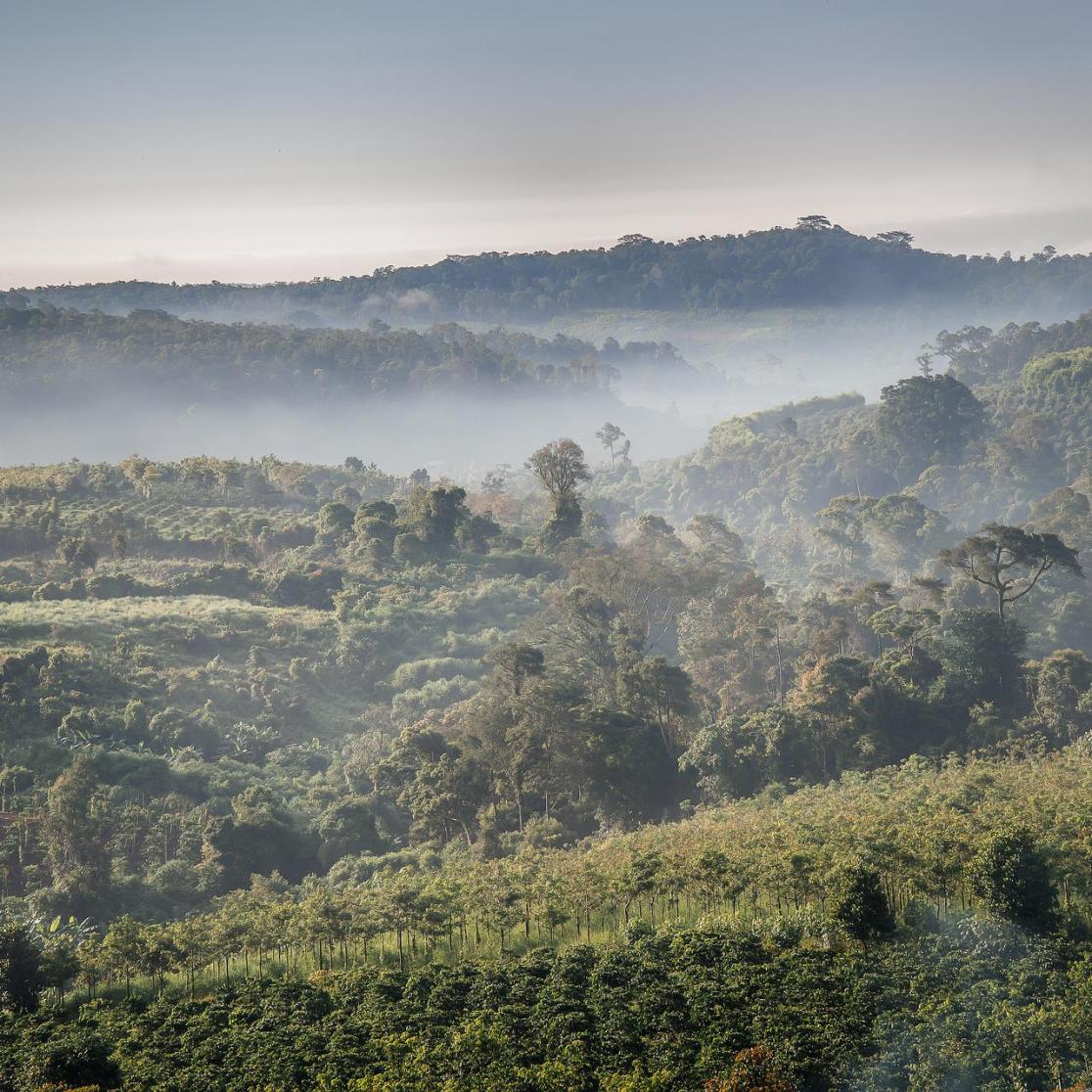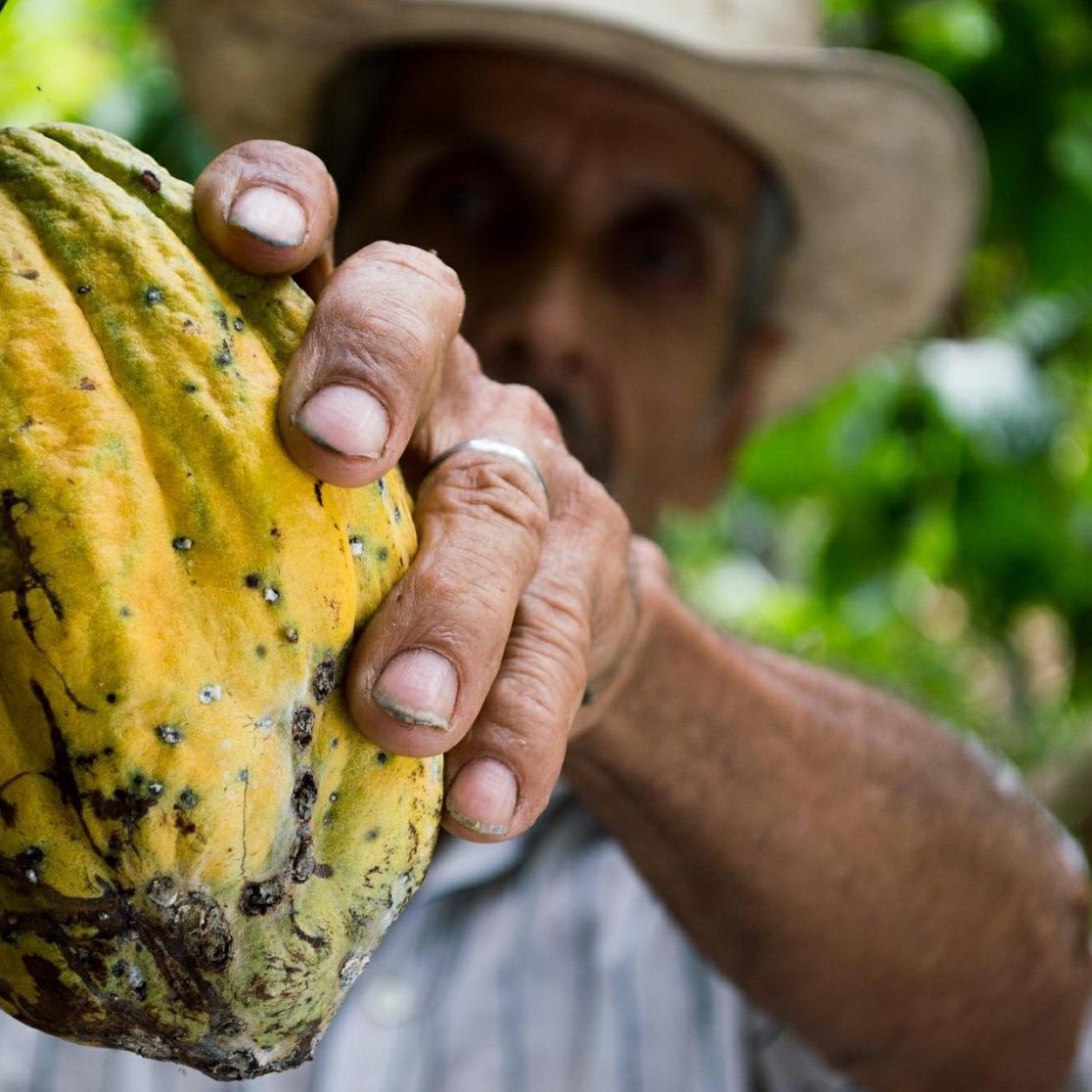Fair Trade Premiums: How Much Reaches the Farmers?
Many of us have purchased fair trade products and paid a premium in hopes of improving the lives of farmers in developing countries. But what effect does this premium we pay in the supermarkets have? And how can we evaluate existing or new policies aimed at raising the income and well-being of smallholder farmers?
Millions of people worldwide, including many smallholder farmers, earn money from farming or processing agricultural commodities, especially tree crops such as cocoa and coffee. These crops are typically farmed in lower- and middle-income countries, where many smallholder farmers cultivating these commodity sectors are poor (Voora et al., 2019a, b). Because of their small-scale farming, smallholder farmers have no control over global market prices and are often restricted by limited negotiating power. Additionally, they are vulnerable to price changes in markets and climate change (International Food Policy Research Institute (IFPRI), 2020). Reducing poverty among the farmers and their workers is vital as they provide employment sources contributing to rural development (Sievers & Saarelainen, 2011).
So far, the success of interventions aimed at reducing poverty among smallholder farmers has been limited. The public and private sector and non-governmental organisations have realised many different types of interventions in tree-crop value chains in the past decades, with most focusing on improving productivity or local capacities and structures (Ingram et al., 2018).

Studies have shown that a significant number of consumers are happy to pay higher prices for fair trade products, believing this will benefit the poor (Taylor & Boasson, 2014). Such products are, for example, labelled with the "FairTrade" Mark, a registered certification label for products grown by producers in lower-income countries. The FairTrade organisation tries to provide economic, environmental, and social benefits to farmers' and workers' lives. The farmers are paid a Fairtrade Minimum Price to ensure a stable income and to make them less vulnerable to poverty. The Fairtrade Premium forms another income stream to support better farming, strong cooperatives, and investment in collective assets to improve crops and yields. But how much of the premium we pay for fair trade products ends with smallholder farmers?
The Data Analytics and Digitalisation department of Maastricht University's School of Business and Economics links data science to business and economic research. Together with the Fair and Smart Data Spearhead, we are working on an industrial project to model the dynamics of and around the value chain (i.e., a set of activities performed to deliver a valuable product to the end customer) for commodities like cocoa and coffee beans.
We use three levels in our model, one for each type of decision-maker: consumers, producers, and regulators. The lower level – the consumer level – tries to capture customers' decision-making when purchasing products in supermarkets or other retailers, while the upper level – the regulator level – models the market rules that are or can be in place. The producer level represents the commodity's value chain from farmer to retailer.
So how much of the fair-trade premium reaches the farmer? Currently, only a few per cent. Using our multi-level model, we will test new or modified policies and regulations to potentially increase the extent of the premium reaching farmers, improving their income and ultimately creating a self-sustaining value chain.

Bibliography
Ingram, V. J., van Rijn, F., Waarts, Y., Dekkers, M., de Vos, B., Koster, T., et al. (2018). Towards sustainable cocoa in Côte d'Ivoire: The impacts and contribution of UTZ certification combined with services provided by companies. Wageningen Economic Research. https://library.wur.nl/WebQuery/wurpubs/fulltext/450223
International Food Policy Research Institute (IFPRI). (2020). 2020 Global Food Policy Report: Building Inclusive Food Systems. Washington, DC: International Food Policy Research Institute (IFPRI). https://doi.org/10.2499/9780896293670
Sievers, M.&Saarelainen, E. (2011). Value chains for rural development: Key issues and policy options to promote value chains for rural development. Downloaded from: http://ilo.org/wcmsp5/groups/public/---ed_emp/---emp_ent/---ifp_seed/documents/publication/wcms_161156.pdf
Taylor, J. E., & Boasson, V. (2014). Who buys fair trade and why (or why not)? A random survey of households. Journal of Consumer Affairs, 48(2), 418-430. https://doi.org/10.1111/joca.12025
Voora, V., Bermúdez, S., & Larrea, C. (2019a). Global Market Report: Cocoa. Winnipeg. https://www.iisd.org/system/files/publications/ssi-global-market-report-cocoa.pdf
Voora, V., Bermúdez, S., & Larrea, C. (2019b). Global Market Report: Coffee. Winnipeg. https://www.iisd.org/system/files/publications/ssi-global-market-report-coffee.pdf
Also read
-
Aurélie Carlier receives Athena Award
Aurélie Carlier receives the Athena Award. This award is for exceptional female researchers who serve as role models through their successful scientific careers.
-
Despite a less tight labour market no end to shortages in healthcare, education, and tech
Interesting new findings in the report 'The Labour Market by Education and Occupation until 2030' from the Research Centre for Education and the Labour Market (ROA) at Maastricht University.
-
Protecting children’s rights in non-existent states
What happens to the universal rights of a child when their home is a “de-facto” state—a political entity that has all the hallmarks of nationhood, yet is not officially recognised? And who bears legal and moral responsibility for these children when war breaks out? These issues lie at the heart of the...